The history of quasars dates back to 1959, when astronomers began searching for fits in visible light for powerful radio sources that were part of the then-new Third Cambridge Catalogue of Radio Sources. To identify such objects the scientists used the Palomar Observatory Sky Survey — a collection of photographic plates obtained from the 1.22-meter Schmidt Telescope. As early as 1960 and 1962, two objects were identified: 3C 48 fitting a faint 16-magnitude star and 3C 286 fitting a 17-magnitude star, but scientists were unable to explain their optical spectra. Matters were complicated by the fact that the radio telescopes of the time determined the position of celestial objects rather roughly, so an original method of was proposed for clarification: observation when some radio sources are covered with the Moon.
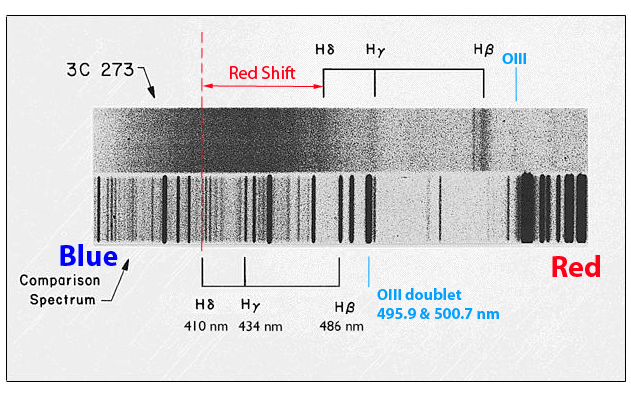
Due to this, in 1962 it was possible to calculate the exact coordinates of the source 3C 273 and it was found that it has both point and extended components. The first corresponded to a 13-magnitude star, the spectrum of which was obtained from then largest 5-meter Hale Telescope of the Palomar Observatory. This spectrum differed significantly from ordinary stars, so such objects became known as quasi-stellar radio sources, or quasars.
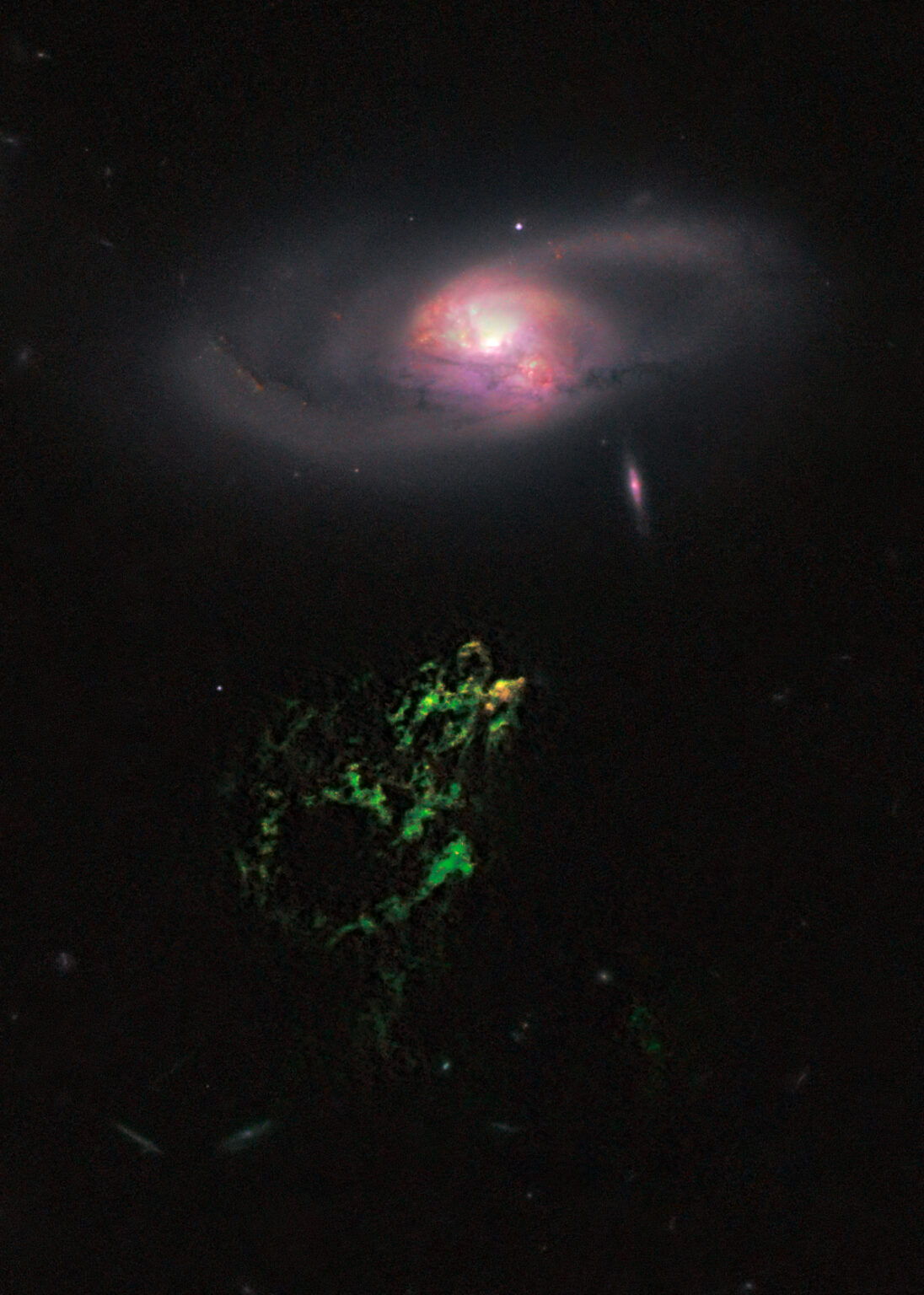
The problem with quasar spectra was that they contained emission lines in the “wrong” places. At first it was difficult to understand to which element they belonged, and in some cases these lines were even isolated. Astronomer Maarten Schmidt was able to solve this mystery the following year. He paid attention that the proportion of distances between some wider emission lines in optical spectrum of quasar 3C 273 do exactly correspond to one of the spectral series of hydrogen atom but they are shifted to the “red” side, that is, in the direction of greater wavelengths. The scientist suggested that this was due to the cosmological expansion of the universe, and therefore the object is located very far from Earth. The emission lines were shifted by the same amount z = Δλ / λ0 = 0.158, which is called the “redshift”. [1]
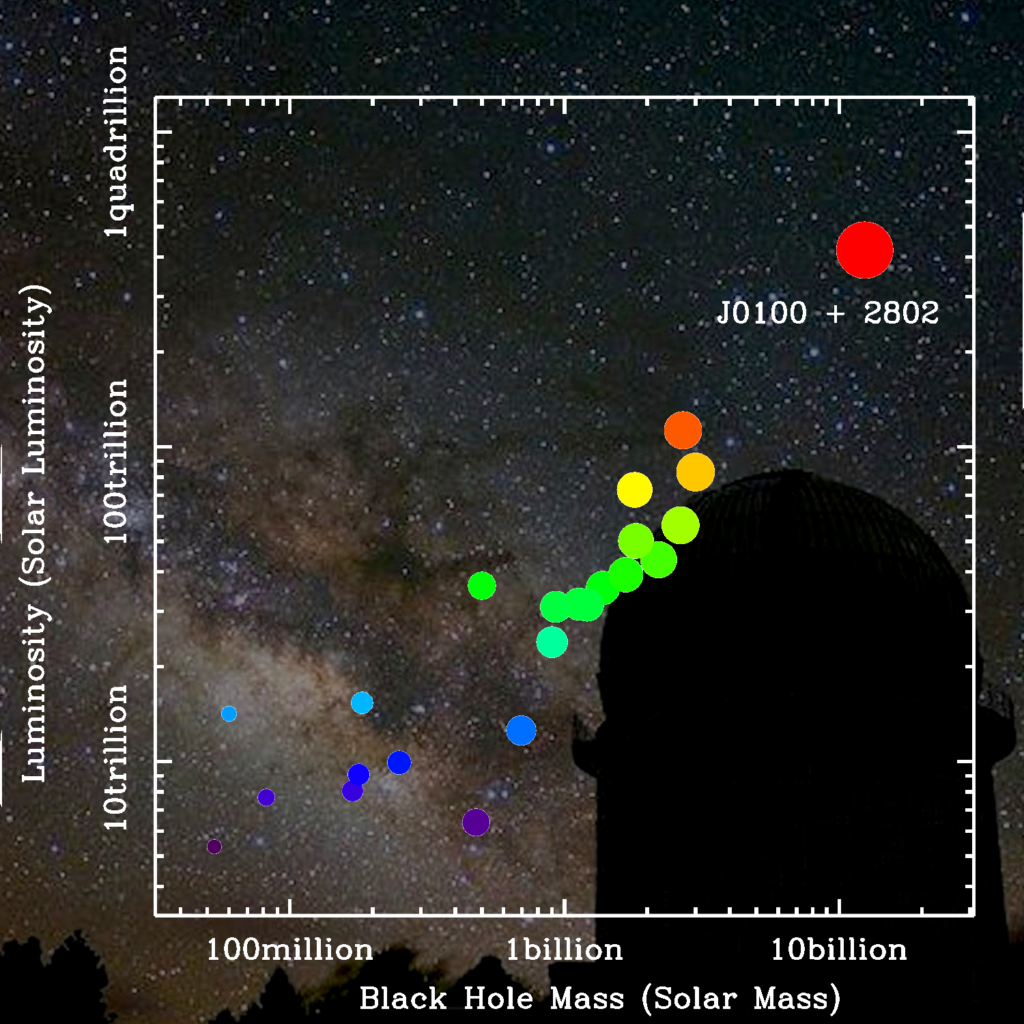
In terms of recessional velocity, this corresponds to 47 thousand km/s. Almost immediately, the redshift was calculated for several more quasars (for example, for 3C 48 z = 0.367). Using Hubble’s famous law, it was calculated that these objects were extragalactic and also very distant sources: 3C 273 must be located at a distance of 2.4 billion light years, and 3C 48 — at a distance of 4.5 billion light years. The idea of general expansion of the universe, as the cause for such a large z for quasars, initially aroused skepticism in the scientific community, but under the pressure of growing observational evidence, such an explanation quickly became commonplace.
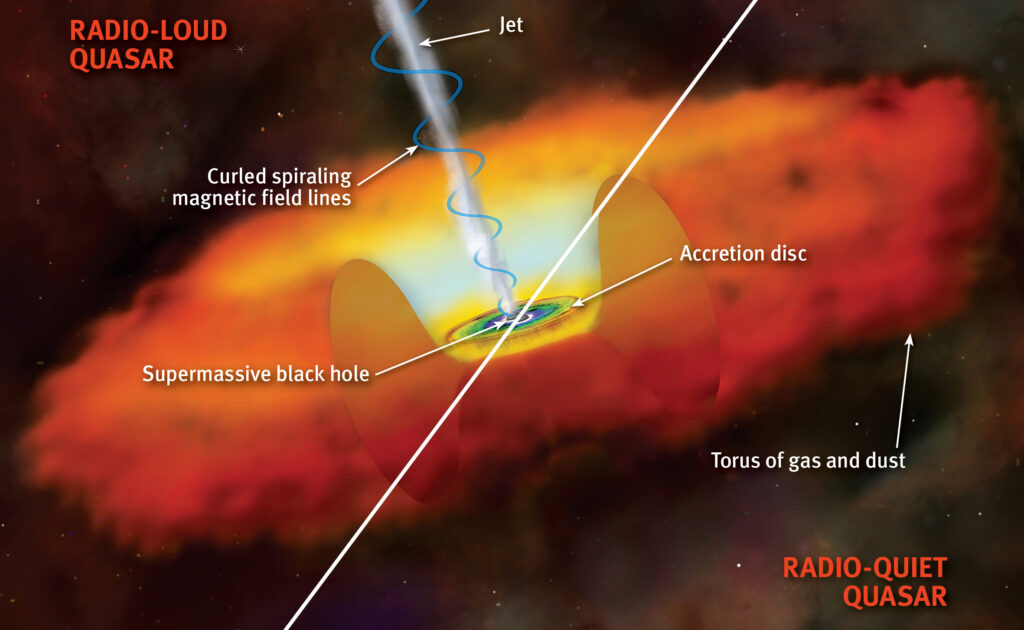
Since 1965, it has become clear that not all quasars are powerful sources in the radio range. Such “quiet” objects are called quasags. Even more, the already known “radio-loud” quasars make up only one ninth of the number of quasars. To avoid confusion, all these objects are now called quasars, but in the sense of “quasi-star object”.
The discovery of quasars (as many as 150 of them were known just four years after the identification of the first such objects) posed to the astrophysicist community the task of finding a physical cause explaining their enormous energy release. After all, to be seen from such a distance, they had to have a luminosity of 1038— 1041 watts! This exceeds the luminosity of ordinary stars by 1012— 1015 times. Thanks to the archives of observations, the scientist were almost immediately able to calculate the approximate sizes of quasars, using the variability of their brightness and assuming that light has a limited speed. For example, 3C 273 has characteristic variability with a period of about a week. That is, the area of space where the radiation comes from does not exceed the size of the solar system! We now know quasars with the variability of only a few hours. Thus, these are not only distant and powerful formations, but also quite compact.
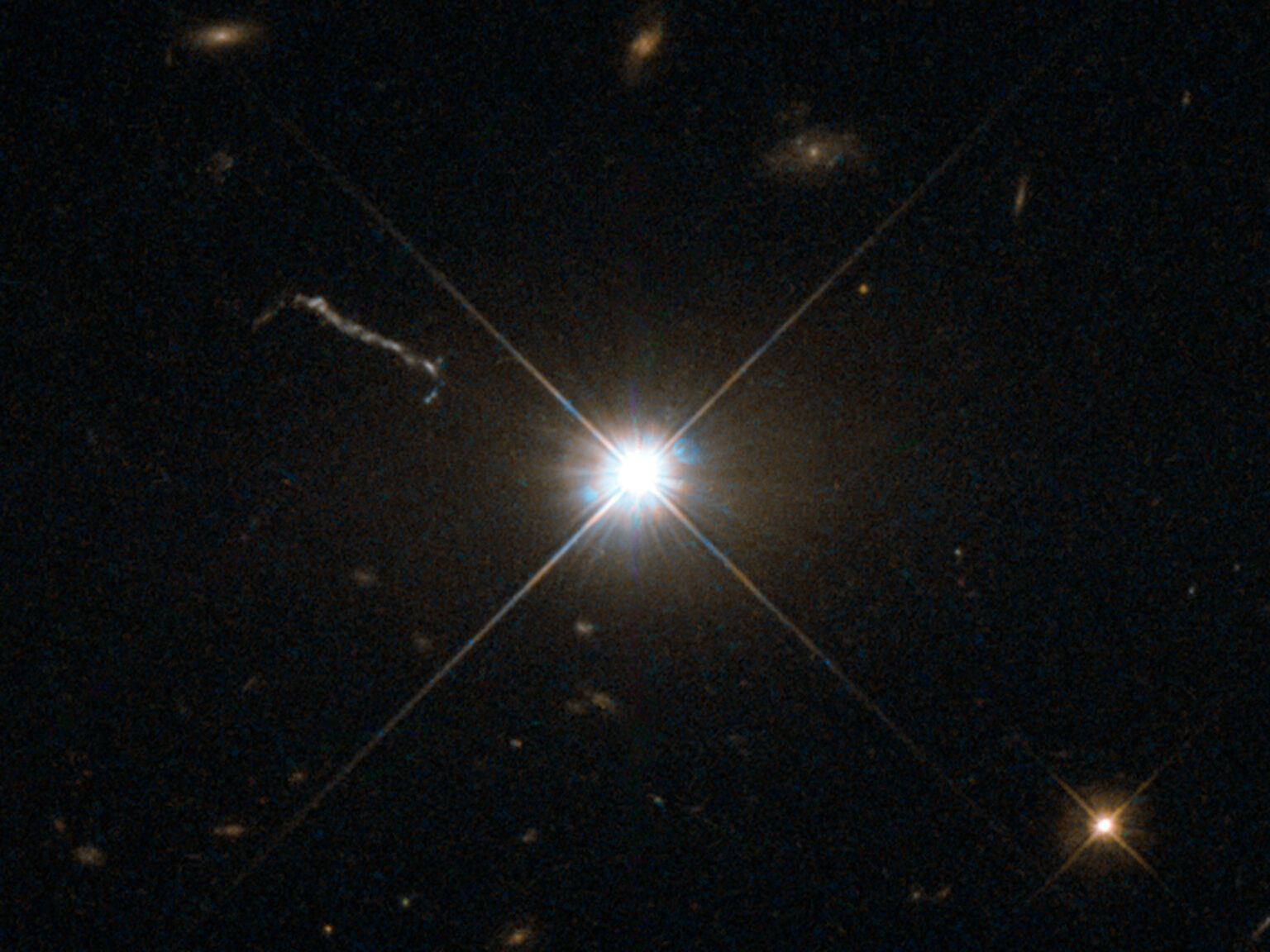
.
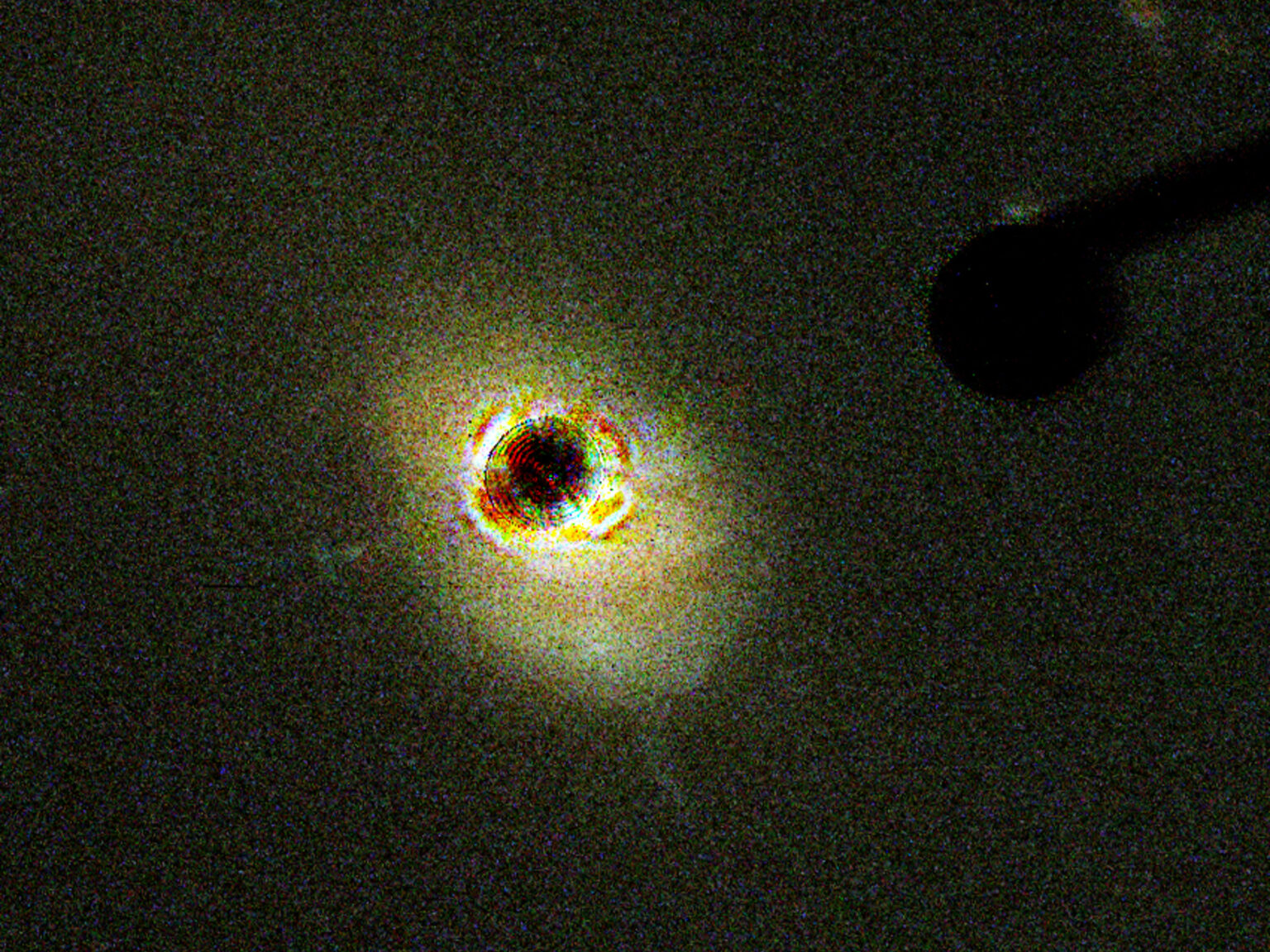
According to modern theoretical research and precise observations in different ranges of electromagnetic waves, quasars are a type of powerful active nuclei of galaxies (hereinafter ANG). Their biggest difference from “ordinary” galactic nuclei is the presence of strong radiation in the short-wavelength part of the spectrum, ie from the visible to the gamma range. Part of the ANG is also intensely “glowing” in the infrared and radio bands, thus covering the entire spectrum of electromagnetic waves.
Such activity is due to the presence of supermassive black holes (hereinafter — SBH) in their centers with masses of millions to tens of billions of solar masses, on which huge amounts of environmental matter fall — the so-called process of accretion takes place, when matter is “screwing” into the disk [2] and due to friction between its various “layers” is heated to high temperatures — almost 100 thousand degrees in regions close to SBH, generating intensive glow. The matter turns plasma at such temperatures. The conversion of gravitational energy of falling on a black hole into electromagnetic radiation can be very effective. For example, the usual burning of bushwood (oxidation of wood) has an efficiency of only 10- 7%, thermonuclear reactions — up to 0.7%, and accretion — from 6% up to 42%! Thus, accretion disks are, in fact, very effective “machines” for converting rest mass into energy.
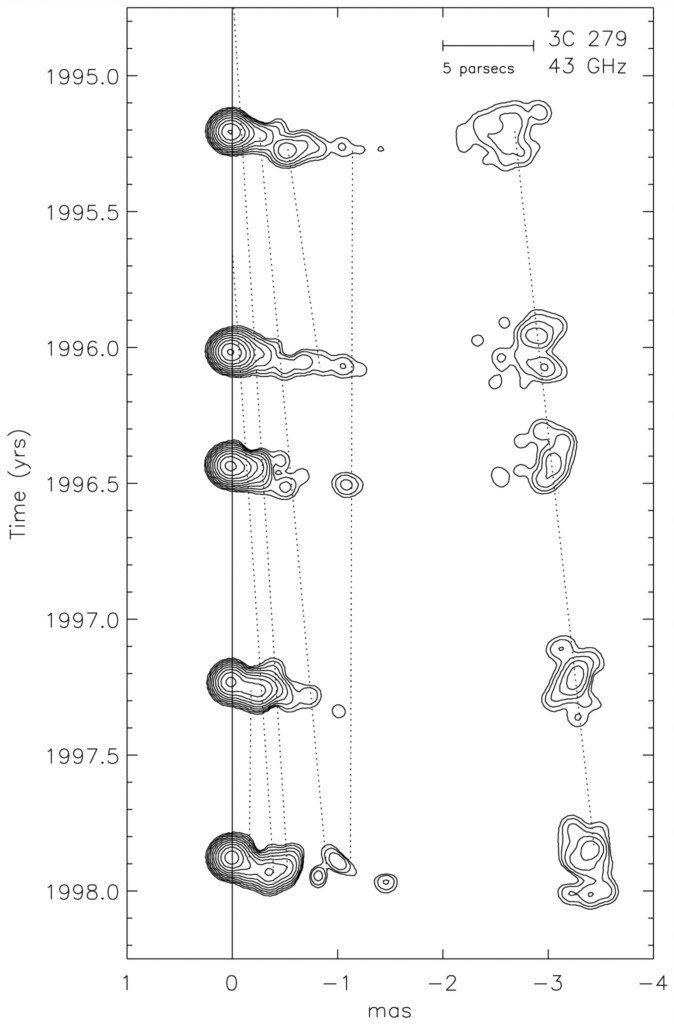
The powerful radiation of quasars is not only related to the heating of the accretion disk plasma as such. The interaction of elementary particles (primarily electrons) with high-energy photons, the “collision” of fast electrons and protons with each other also make a significant contribution to the peculiarities of the spectra of quasars. There is one more important and special process — the interaction of high-energy charged particles with a magnetic field. Due to this interaction, powerful radiation is generated in a wide range of energies from polar ANG emissions in general and from quasars in particular. In this case, the magnetic field of the accretion disk interacts with the SBH in a special way, getting involved in the formation of these emissions. They are called jets (jets). They are oppositely directed streams of particles that can move at speeds close to the speed of light. In extreme cases, their length can reach millions of light years. Quasars with jets and strong radio emission are called radio-loud by astrophysicists, and those that do not have similar properties are called radio-quiet. The already mentioned quasar 3C 273 belongs to the first category. The long structure discovered in 1962 turned out to be a jet flying out of its center. Its apparent speed exceeds the speed of light seven times, but after taking into account a number of geometric corrections, scientists have obtained its real value — 0.1 ÷ 0.2 light speed, which is still very much (30-60 thousand km/s). But for fragment D of the quasar 3C 279 jet, the observational velocity is about five times that of light, with a real velocity of about 0.98 c.

The fact that quasars are the active nuclei of galaxies — that is, part of the systems of already known objects in the universe — was not established immediately, although quasar 3C 48 was discovered to have a faint “nebula” as early as in the mid- 1960s. The main obstacle was their great remoteness and luminosity. The latter can be from several hundred to a thousand times higher than the total luminosity of all the stars in the galaxy. Only in the mid-70s of the last century, after research with the most powerful optical telescopes we were able to suggest (and only for the nearest quasars with z <0.5) that these objects are not standalone celestial bodies, but parts of distant stellar systems.
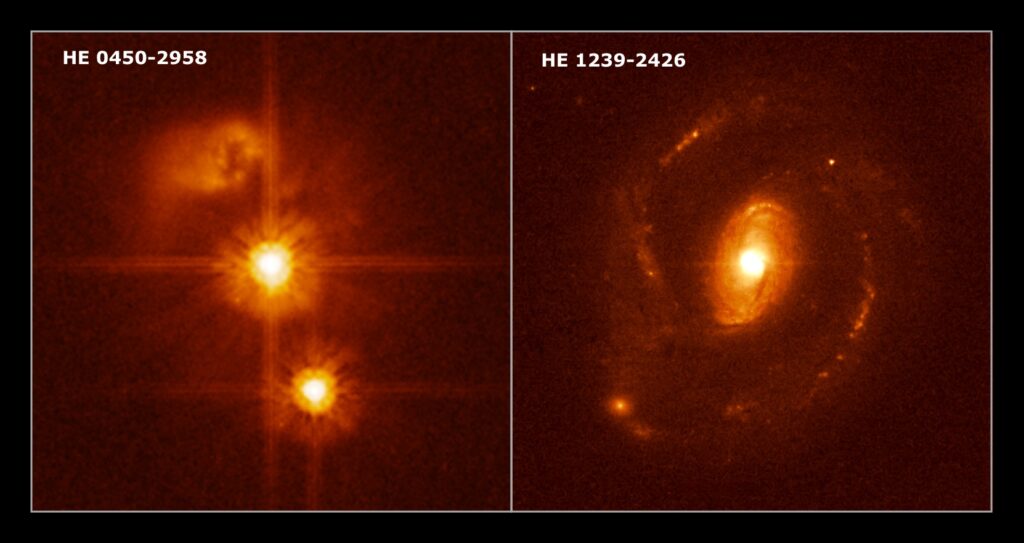
The final confirmation of this hypothesis was received only in 1982, when spectral observations showed signs of the presence of ordinary stars in the vicinity of 3C 48. With the further improvement of telescopes, scientists were able to discover a quite “stormy” world of quasar parent galaxies.
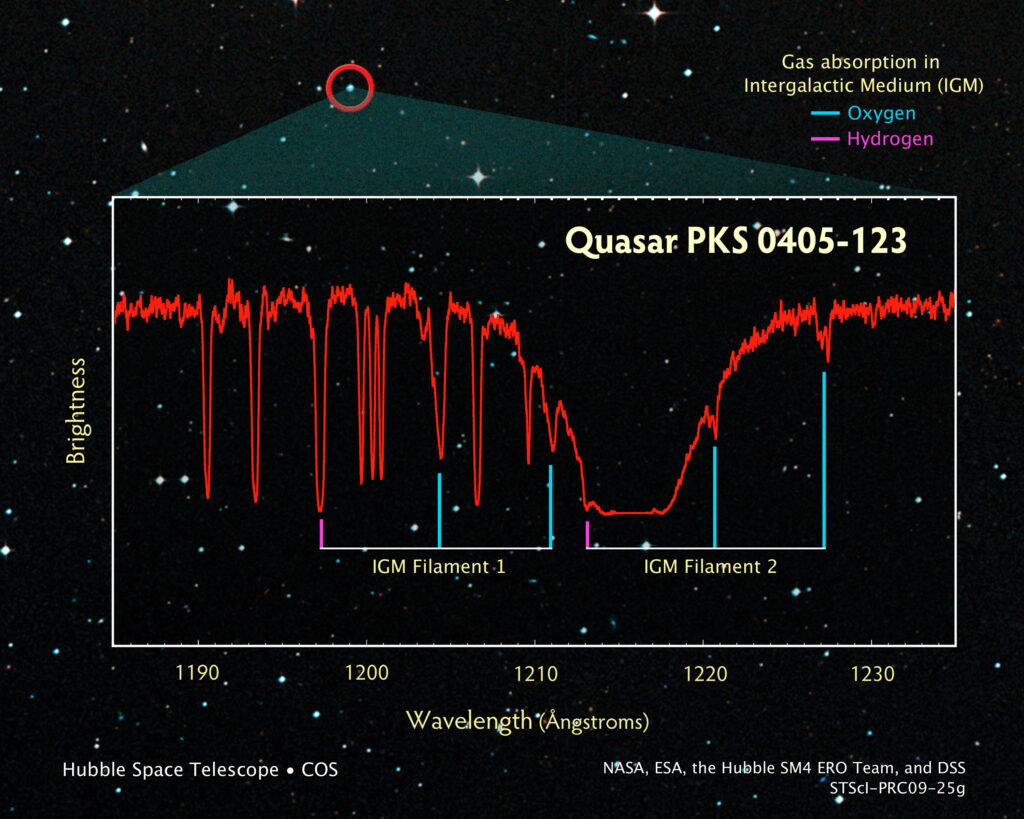
For example, in 2007 a group of astrophysicists using the Hubble Space Telescope concluded that at least some quasars could operate only having an external source of gas, which might be provided by colliding with young gas-rich galaxies. These conclusions were obtained after analyzing the observations of a number of quasars that show a low content of “metals” in their spectra. [3] The results obtained by other teams of scientists indicate the reality of such an explanation.
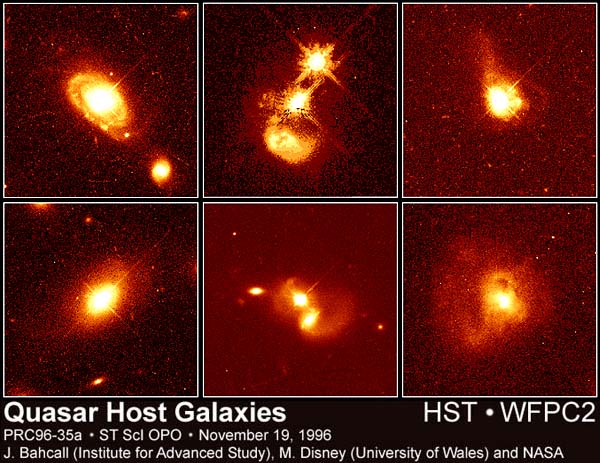
Many images of galaxies with quasars look like irregularly shaped clouds. Approximately two-thirds of all known parent galaxies have “correct” shapes, meaning they are elliptical or spiral with no clear signs of merging or colliding with other galaxies. Thus, the material for “feeding” supermassive black holes is contained in these systems themselves — although the collision is of great importance, astrophysicists have yet to establish other mechanisms for “supplying material” to the SBH. It is worth noting that obtaining images of galaxies surrounding quasars is a difficult task even today, due to the high brightness of the latter — despite the constant improvement of telescopes. There is even a known quasar, for which astronomers were not able to do so directly.
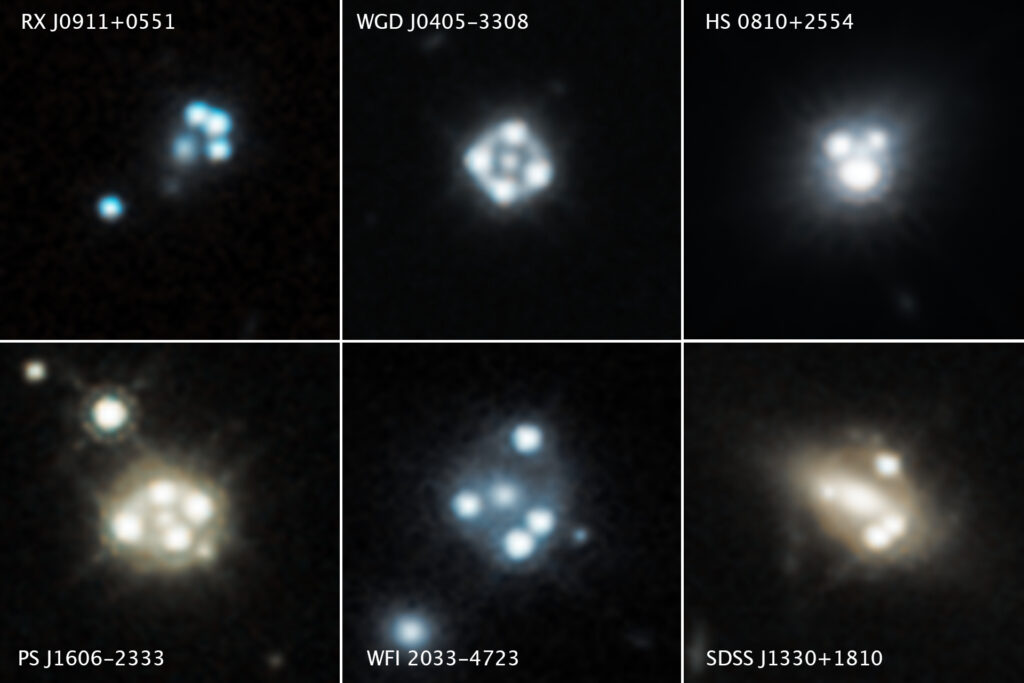
It is natural to expect that gas reserves “feeding” intensive activity will be depleted over time, and the quasar should “fade out”. Indeed, astronomers do not observe such extremely bright objects in the near universe. But supermassive black holes in the centers of galaxies have not gone anywhere — just some of them are less active and belong to a wide class of nearby active galactic nuclei. Among them there are for example the so-called Seyfert galaxies. [4] The others are either completely “extinguished” or show sporadic activity, such as a black hole in the center of our own Milky Way. In summary, quasars are the active nuclei of young gas-rich galaxies in the early universe that are either just emerging or have just formed.
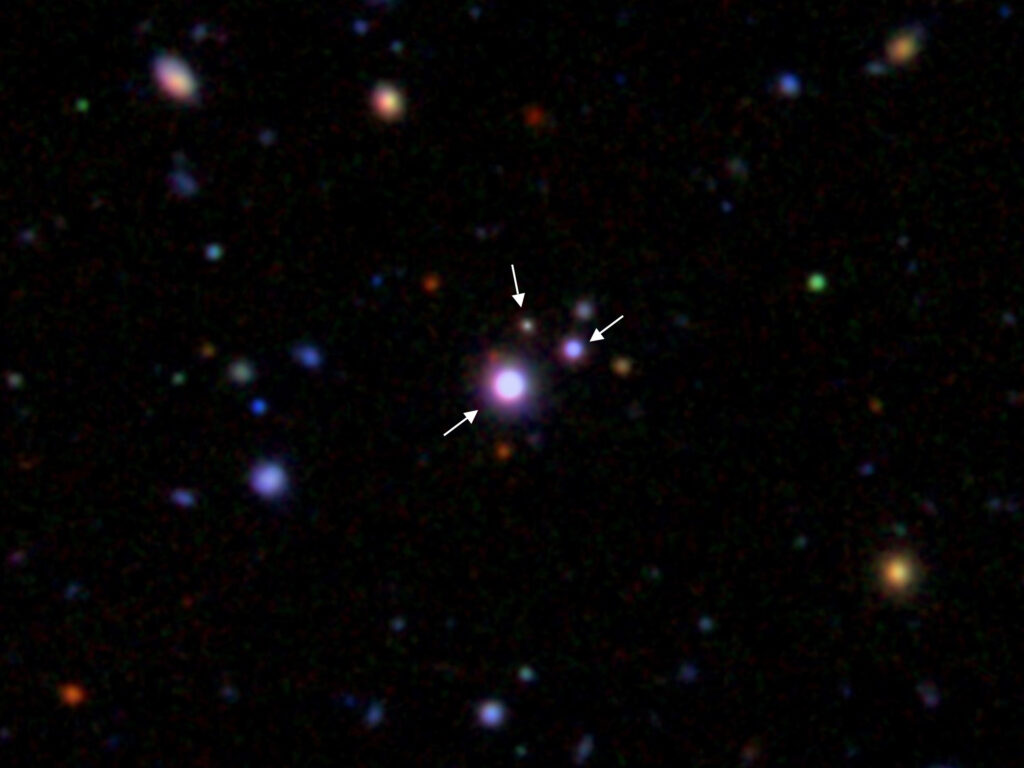
Now there are more than hundreds of thousands of quasars known. They are not only interesting by themselves, but also bring great benefits to cosmology, physics of high energies and extreme states of matter, various areas of astrophysics. For example, thanks to quasars, it was possible to detect distant superclusters of galaxies, to discern “cosmic web nodes” in the large-scale structure of the universe. In addition, due to their power and remoteness, these objects help in the search for large reservoirs of cold gas in the early universe, acting as a “backlight” of these gas clouds. After passing through them, the light of a quasar gets “imprint” of their presence, by which it is possible to estimate the distance to these formations and some of their properties. These clouds are in fact the “building material” for future galaxies, so they often show a primary chemical composition, without “contamination” with chemical elements heavier than helium. In addition, their spatial distribution even helps us recreate a picture of the spread of dark matter in the universe. And the exotic effect of lensing the light of quasars by nearby galaxies or their clusters makes it possible to find this mysterious matter in galactic halos or to determine its mass fraction in the total mass of clusters.
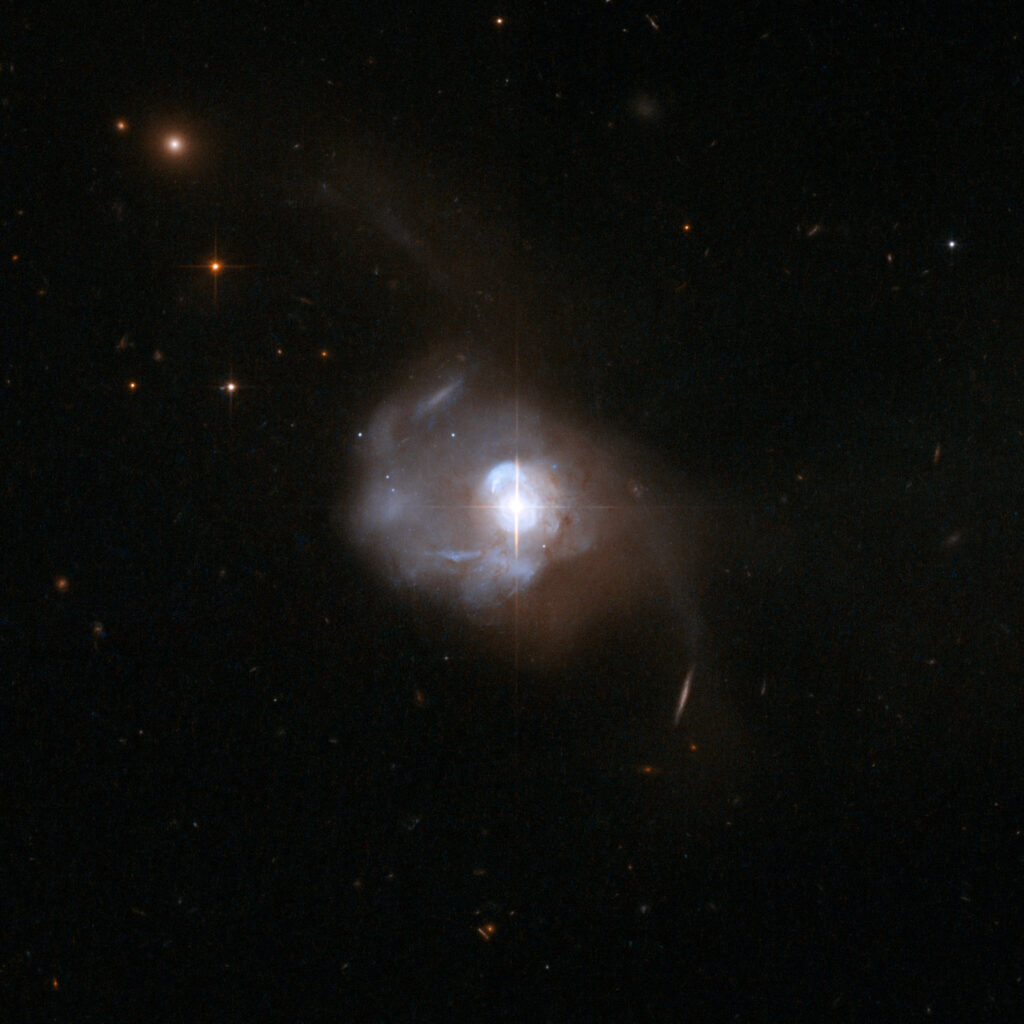
The discovery of quasars produced if not a revolution, then a significant contribution to astrophysics. These objects show us the turbulent times of the early universe, providing a “window” into physical processes of incredible energy, and due to their great brightness and remoteness allow us to study the properties of the intergalactic environment. It is impossible even to imagine what other surprises these distant but very important “quasi- star” objects hold in store for us.
[1] In this formula, λ0 is the wavelength of the corresponding line in the laboratory spectrum, Δλ is the amount of its shift. The redshift for very distant objects is related with their recessional velocity (v), by the formula: z = (1 + v / c) √ (1— v2 / c2), where c is the speed of light.
[2] The radius of the accretion disk in quasars is estimated at 5-10 light days or ~ 130-260 billion km, which is equivalent to 100-200 distances from the Sun to Saturn.
[3] “Metals” in astronomy are all chemical elements except hydrogen and helium.
[4] Named after Carl Seyfert, who discovered this type of galaxy in 1943, even before the discovery of quasars.

